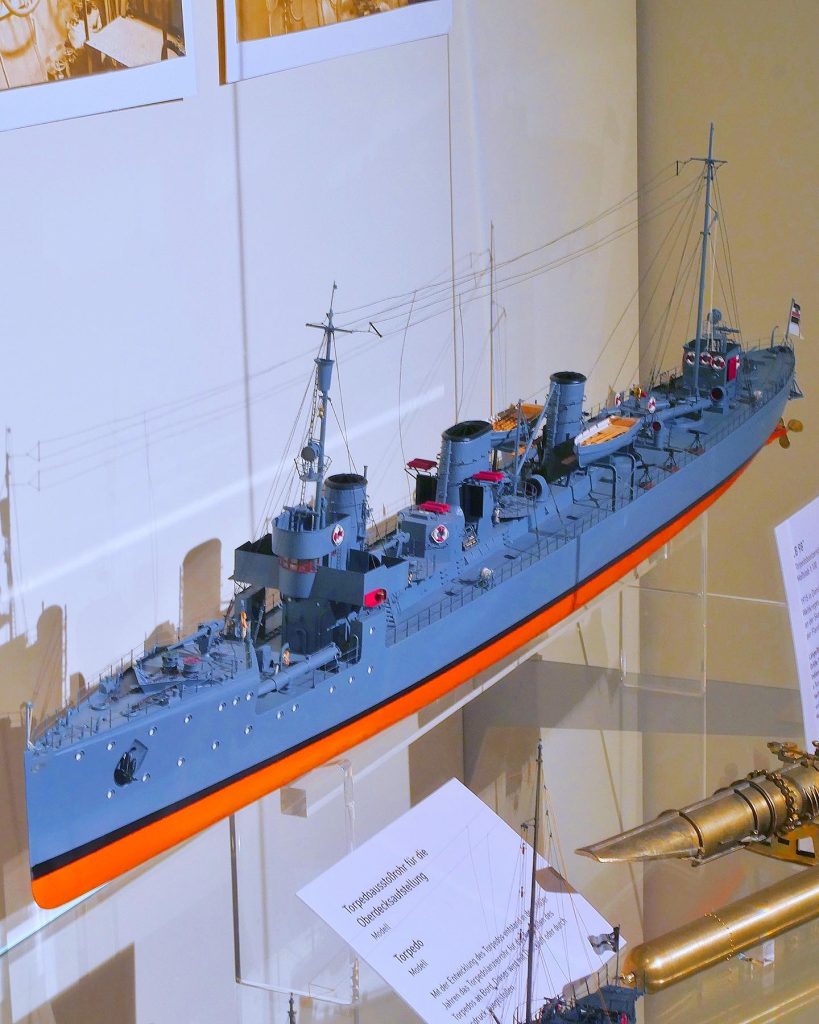
Destroyer SMS B 98. This model in a scale of 1:100 was built by Günther Seeher ad is displayed on deck 5 of the museum.
The origin of the first destroyers of the Imperial German Navy is intrinsically linked to international business relations. The Imperial Russian Navy started looking for a new design for a larger, heavier torpedo boat that could reach a speed of over 30 knots in 1909. The design accepted was one made by the AG Vulcan shipyard in Stettin. The construction of the prototype, the Nowik, was ordered at the Putilow shipyard in St. Petersburg. Further destroyers were ordered. The Blohm & Voss shipyard in Hamburg worked closely with the Putilow shipyard, of which it had shares. They started producing parts for the Russian Destroyers until the outbreak of World War I. Blohm & Voss still had parts and made an offer to the German Navy for the production of a new class of destroyers. The Navy ordered four units at first. With a top speed of 36 knots, they outperformed by far any other torpedo boat that the German Navy had. The first boat, B 97, was delivered in late 1914, the second in January the 2nd 1915. This was the B 98.
SMS B 98 was commissioned on March 1915. She was active in the North Sea. On the 31st of May 1916 she participated in the Battle of Jutland. She survived the battle having received a single hit that killed two and wounded 11 of her crew. In 1917 she was transferred to the Baltic Sea as support for amphibian landing actions. On October the 15th she hit a Russian sea mine that destroyed the best part of her bow and killed 14. But a wooden Bow was built before she steamed to the yard for full repairs. She had no more relevant actions until the end of the war. When the German High Seas Fleet was interned in Scapa Flow, B 98 became a post boat linking the Ships in Scotland with their homes. The High Seas Fleet was scuttled on June the 21st 1919, one day before B98 returned with post from Germany. The British Royal Navy captured the boat. B 98 was sent to scrapping in February 1920 but her towing cable broke in a storm and she violently beached in Sanday, where the remains of her wreck are still today.
This model in a scale of 1:100 was built by Günther Seeher ad is displayed on deck 5 of the museum.
